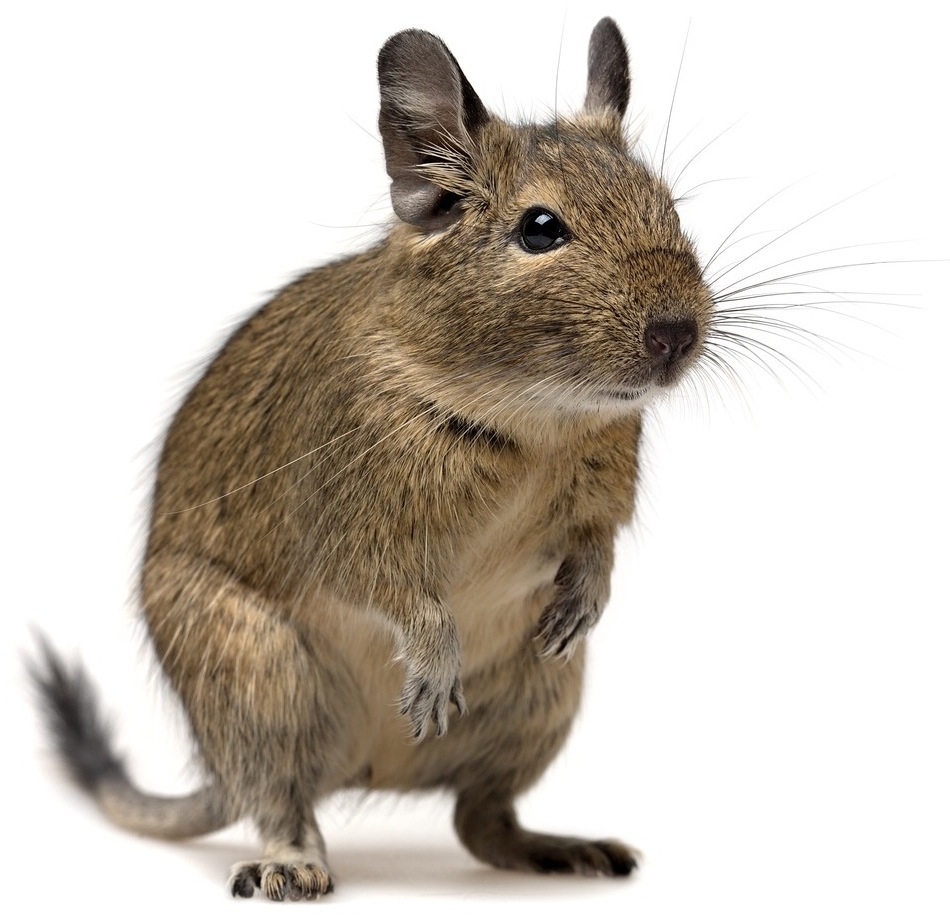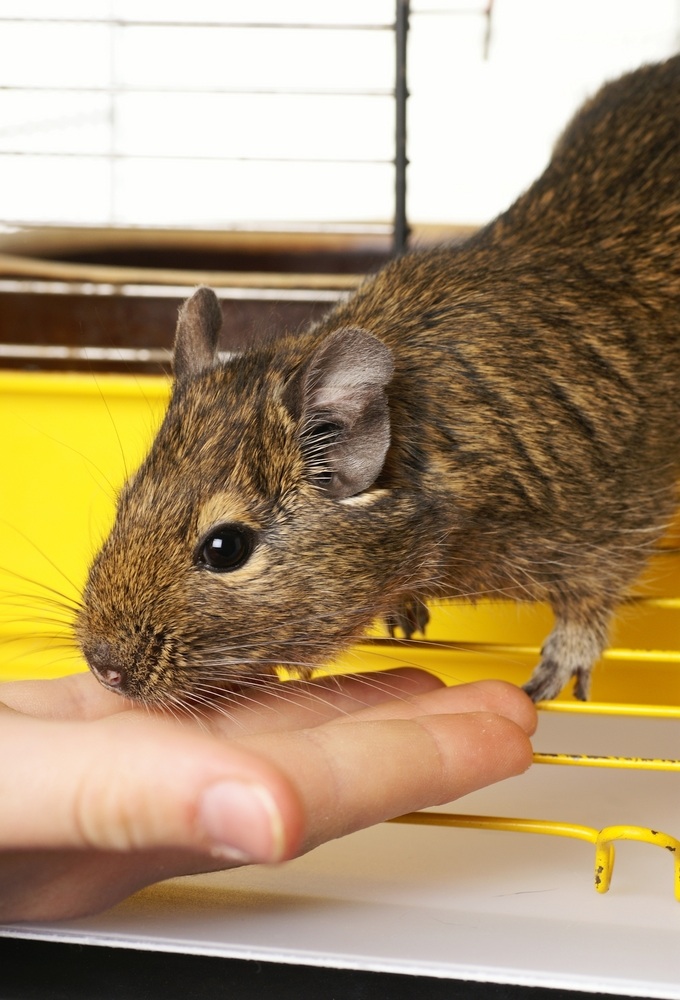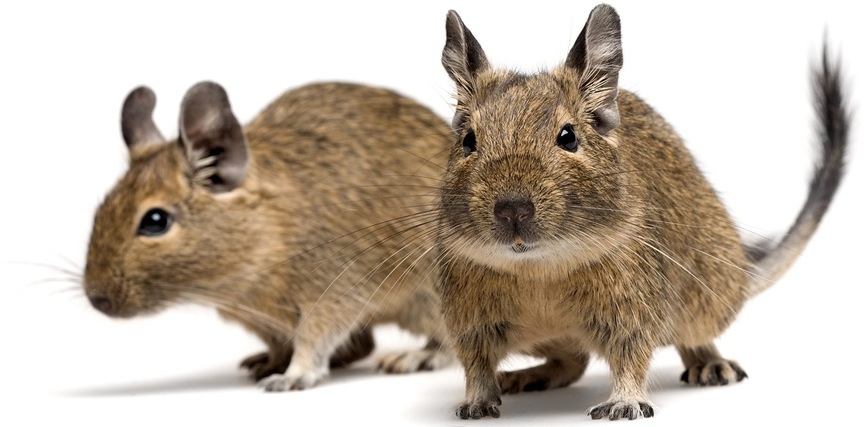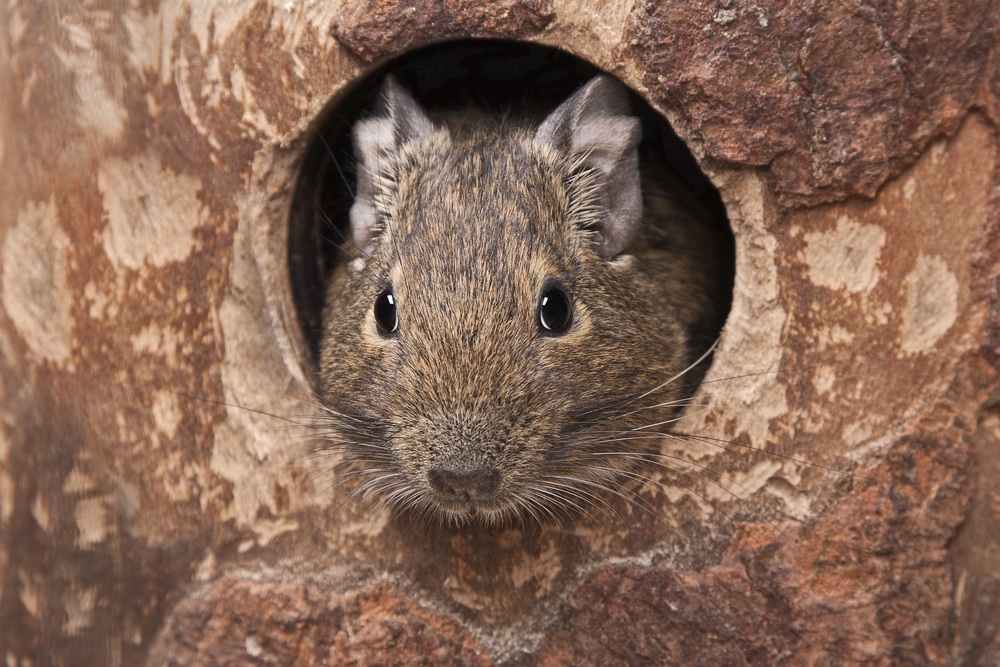Degus
The degu (Octodon degu) represents a relatively recent arrival on the pet scene, although like many rodents, they were originally kept for medical research purposes, extending back to the 1950s in this case. They belong to the caviomorph group of rodents, being most closely related to chinchillas, but also to guinea pigs.
Degus originate from the Andean region of South America, where they live in groups. The countryside here tends to be quite open and rocky, and so degus are very agile, being able to jump and run well. They are also capable of digging with their claws.
Their body length averages 15-20cm (6-8in), with their overall length, including their tail, being up to 30cm (12in). A degu’s long tail is well-furred, and explains why they are also called brush-tailed rats, although they are not closely-related.
Unfortunately, a degu’s tail is also easily injured, and the tip can be lost very easily. It will not regrow, and degus need to be handled carefully, being grasped by the body and never the tail.

An indoor wire mesh enclosure combined with tubes and retreats will be ideal for them, providing more space than a converted aquarium. Do not use wooden pellets as bedding for degus. These will swell up, and can cause serious problems in the digestive tract as a result if they are swallowed.
As always, cedar shavings also should not be used as a floor covering. Avoid sawdust as well, because it can irritate the respiratory tract and will have the same effect if it enters the eyes.
Degus should be kept in groups, being social by nature, but check that you will not be presented with unexpected offspring. The space between the anal and genital openings will be longer in males, as in the case of other rodents. Fighting is unlikely, provided that you do not try to introduce a new degu to an established group, and that they are not overcrowded.
Care

The care of degus is very similar to that of chinchillas, and they should be offered a similar opportunity to dust-bathe regularly. Chinchilla pellets can even form the basis of their diet, along with plenty of good quality hay, if a specific degu diet is unavailable, although this will be preferable.
Degus are also very susceptible to diabetes mellitus (‘sugar diabetes’), and so should not be offered anything that is sugary, and this includes fruit. A little fresh food such as strips of cabbage, broccoli and similar greenstuff can be given once or twice a week.

Young degus are weaned by about five weeks old, and they may live for five years or so. Being lively by nature, degus tend not to be so placid as guinea pigs, and are less suitable especially for younger owners, as they are less content to sit still and be stroked. They can be tamed with a little patience, but they do not like being tightly restrained. A nestbox for sleeping purposes should always be provided.
Colours
The typical degu displays brown agouti colouring, but as these rodents have become more popular as pets, so colour mutations have arisen and these are now becoming more widely available. There is a black variety, which is actually a very dark brown shade, rather than actually black, as well as the so-called ‘blue’ form that in reality appears greyish.